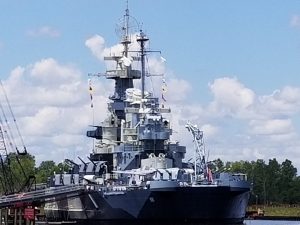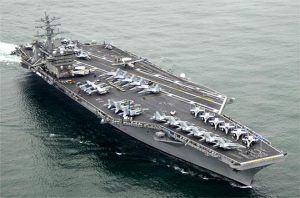


Ships
Purpose
The Ships table is the most comprehensive and nearly complete of the tables in this site. It includes about 48,800 different vessels. It is primarily, but not exclusively, Navy ships, that have helped make American history.
Fewer than half of the vessels in the table are named. Most of the others are identified only by a number but one that is unique to that vessel (called hull numbers by the Navy.) The most famous of the latter is PT-109, John Kennedy’s PT boat that was sunk in World War II. Another famous group is the “LSTs”, the Landing Ships-Tank of World War II fame. (Some crew members who served on these big, ungainly vessels said that LST stood for Large Slow Target.) Following World War II, the Navy started giving the LSTs names, but those in the war were identified only by their hull numbers.
DANFS
The most authoritative and most common source of information about the Navy’s commissioned and named ships, plus the LSTs, is the Dictionary of American Naval Fighting Ships (DANFS). This series of eight books was published by the Navy and was not available through commercial book stores. The books are now out of print, but are available through the used book market. Much if not all of their content is now also available on line at http://www.hazegray.org/danfs/
Many thousands of watercraft had non-unique numbers, or semi-unique numbers, the latter including landing craft that carried the number of the transport that carried them plus a number of their own (such as PA-91-15). I have not tried to include these latter craft in this project.
The World War II Commercial Fleet
The Navy in World War II utilized many commercial vessels, even in the dangerous landing operations, the most famous being the Liberty Ships, which were mostly freighters, and their larger replacements, the Victory Ships. These and other commercial vessels from that war are included in the table. The U.S. built thousands of these ships and other commercial type ships during and shortly after World War II. Lists of the various types of commercial design ships built for the war, and separate lists of what ships were built by each shipyard, are at the Maritime Commission site, http://shipscribe.com/shiprefs/mc/index.html
Some of these were turned over to the Navy to operate, but most were operated by commercial shipping companies, even in battle and particularly in dangerous convoys crossing the Atlantic.
The liberty ships were named for people, and a book has been published that identifies who these people were. It is Liberty Ships, the People Behind the Names, compiled by Capt. Robert Deschamps and published in 1999. It is probably available on line.
The Army’s Ships
The Army has also used thousands of ships and other watercraft over the years, especially in the Civil War and World War II. Major sources of information about these vessels are:
The Army’s Navy Series Volume I, Marine Transportation in War. The U.S. Army
Experience 1775-1860, by Charles Dana Gibson and E. Kay Gibson
The Army’s Navy Series Volume II, Assault and Logistics Union Army Coastal and River Operations 1861-1866 by Charles Dana Gibson and E. Kay Gibson
U.S. Army Ships and Watercraft of World War II, by David H. Grover
Smaller Vessels
Many books and web sites have been published about the tens of thousands of smaller vessels that the Navy used during World War II. I have found several of them and am sure there are many more that I’m not aware of.
Two fine examples are:
Ten Thousand Men and One Hundred Thirty “Mighty Midget” Ships–The U.S.S. LCS(L)s in World War II, by Raymond A. Baumler. This is about the Landing Ship Support (Large) vessels. This book was privately published and printed in 1991 by PIP Printing, Rockville MD.
At Close Quarters, PT Boats in the United States Navy, by Robert J. Bulkley, Jr. This book has extensive information about the history of each PT-Boat, many of the men who served on them, and their organizations. This book was first printed in 1962 for the Navy by the Government Printing Office, and has been reprinted by the Naval Institute Press.
Ruwix is a collection of online puzzle programs and tutorials. Discover the secret of your unsolved Rubix Cube.
NAMENAME
TYPE
HULL_NUM
CLASS
COMM_IS_DATE
RECLASS_NUM
BUILDER
BUILT_CITY
BUILT_STATE
STATUS
DECOM_SUNK_OR_RECLASS
HOME_PORT
SPECIFICATIONS
HISTORYNOTES
Jacksonville
Tanker
–
–
1944-01-13
–
Kaiser Co., Inc., Swan Island
Portland
OR
–
–
–
–
Maritime Commission Hull 837
Merchant ship
Original operator, Deconhil Shipping
WW II
Jacob A. Westervelt
–
–
–
1944-08-15
–
Todd-Houston Shipbuilding Corp.
Houston
TX
–
–
–
–
Maritime Commission E Hull 2949
Merchant ship
Original operator, A. H. Bull & Co.
WW II
May 13-Jun 23 1945, Operation Iceberg, Okinawa Campaign
Jacob Bell
SwStr
–
–
1861-08-22
–
–
New York
NY
Decom
1865-05-13
–
–
Built 1842
Purchased by Navy Aug 22 1861 and commissioned the same day
Civil War
Potomac
North Atlantic Blockading Squadron
Oct 17 1862, captured C. F. Ward with contraband cargo
Nov 4 1862, destroyed two schooners up Nomini Creek VA
Aug 23 1863, captured schooner Golden Leaf running blockade at Rosier’s Creek VA
Captured two ships 1864
Decommissioned May 13 1865
Lost at sea Nov 6 1865 while being towed
Jacob Chandler Harper
–
–
–
1944-12-14
–
Todd-Houston Shipbuilding Corp.
Houston
TX
–
–
–
–
Maritime Commission E Hull 2979
Merchant ship
Original operator, U. S. Navigation Co.
WW II
Jacob H. Gallinger
–
–
–
1943-07-09
–
New England Shipbuilding Corp.
South Portland
ME
–
–
–
–
Maritime Commission E Hull 794
Merchant ship
Original operator, Coastwise Trs.
WW II
Jacob Jones
DD
130
Wickes
1919-10-20
–
New York Shipbuilding Corp.
Camden
NJ
Sunk
1942-02-28
–
–
2nd Jacob Jones
Named for Commodore Jacob Jones, qv
Decommissioned Jun 24 1922
Recommissioned May 1 1930
1938, Squadron 40-T
1940, Neutrality Patrol
WW II
Jan 1942, Convoy SC-63
Jan 1942, Convoy HX-169
Jan-Feb 1942, Convoy ON-59
Sunk Feb 28, 42 off Cape May NJ by torpedo from German submarine U-578. LCDR Hugh P. Black. All but 25 or 30 of crew killed in explosion of the ship, and others lost before they could be rescued and returned to safety
Jacob Jones
DD
61
Tucker
1916-02-10
–
New York Shipbuilding Corp.
Camden
NJ
Sunk
1917-12-06
–
–
1st Jacob Jones
Named for Commodore Jacob Jones, qv
WW I –
Sunk Dec 6 1917 by torpedo from German submarine U-53. At least 64 of crew lost. Captain of the attacking submarine radioed position of survivors, enabling rescue.
Jacob Jones
DE
130
Edsall
1943-04-29
–
Consolidated Steel Corp.
Orange
TX
Decom
1946-07-26
–
–
3rd Jacob Jones
Named for Commodore Jacob Jones, qv
WW II
Sep-Oct 1943, Convoy UGS-19
Dec 1943, Convoy GUS-24
Crossed Atlantic 20 times
Decommissioned Jul 26 1946
Jacob Musselman
StwStr
–
–
–
–
–
Paducah
KY
Destroyed
–
–
–
Built 1860
Civil War
Union steam transport
Civil War
March 1862, used to transport Union troops for the Battle of Shiloh. (Hurst List) Shonwn in Hyrst list as Musselman
Captured near Memphis 1/6/1863 by Confederates, who detroyed her.
Jacob Perkins
–
–
–
1944-02-25
–
Todd-Houston Shipbuilding Corp.
Houston
TX
–
–
–
–
Maritime Commission E Hull 2912
Merchant ship
Original operator, Isthmian Steamship Co.
WW II